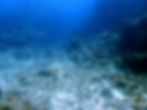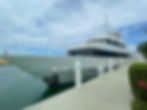Last week of data collection :-(
- Michelle Taylor
- Aug 13, 2023
- 2 min read
Last week we were aboard the Caicos Explorer II travelling to East Caicos, the largest uninhabited island in the Caribbean. The boat was filled with researchers and volunteers conducting 5 different research projects! One looking at the health of the reefs in East Caicos through AGRRA fish, coral, and benthic surveys. One looking at the seabirds in Turks and Caicos Islands through land surveys specifically looking in East Caicos for nesting full-billed tern. The East Caicos Wilderness Project xxx. And of course my research project on coral rubble beds.

The divers who were diving all week in East Caicos. PC: Charlie @oceaneyesmedia
The reefs in East Caicos were in okay shape. There is evidence of Stony Coral Tissue Loss Disease (SCTLD) and the live coral cover percentage was down compared to 2018 surveys. But, there were large brain corals that were completely healthy and lots of big schooling fish around. The reef formation on some of the sites was spur and groove, which forms large gullies between reefs that rise 10 m +. Rubble can accumulate in the gully and is then moved around in storms, eroding it further.

An example of the sites we surveyed with rubble in the base of the valley.
Diving from a liveaboard means you have much more time because the travel to the dive sites happens while you do other things - like have breakfast or sleep! However, filtering water samples and imaging specimens on a moving boat is…interesting! We were very lucky with the weather and only had 3-4 ft waves, while previous cruises to the same area have had 10-12 ft!

Our home for the last week - the Turks & Caicos Explorer II.






